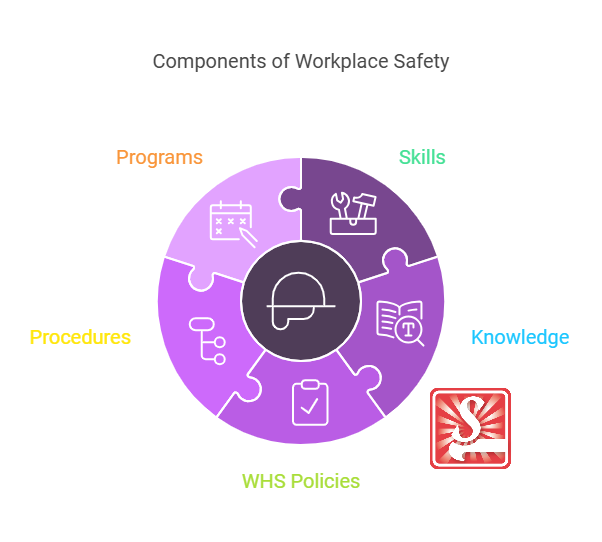Work Area Hazards When Assisting with Maintaining Workplace Safety
Posted by SkillMaker in Dec, 2024
What is a concise description of work area hazards when assisting with maintaining workplace safety?

Work area hazards involve potential threats or dangers present in the workplace that could result in harm to employees or visitors. Identifying these hazards is a critical part of maintaining workplace safety and includes understanding the environment’s physical, chemical, and ergonomic threats.
Why do people in enterprises need to be aware of work area hazards?
Enterprises need to be aware of work area hazards to protect employees and reduce the risk of accidents, injuries, or illnesses. Recognizing and mitigating hazards support legal compliance, improve productivity, and foster a safety culture within the workplace.
“Being proactive in identifying work area hazards ensures a safer environment and safeguards employees’ well-being, enhancing overall workplace productivity and morale.”
What are the key components or elements of work area hazards?
Key components of work area hazards include:
- Physical Hazards: Such as slips, trips, falls, or unguarded machinery.
- Chemical Hazards: Exposure to harmful substances and materials.
- Biological Hazards: Risks from bacteria, viruses, or other microorganisms.
- Ergonomic Hazards: Poor workstation setup that can lead to musculoskeletal disorders.
- Psychosocial Hazards: Workplace stress, harassment, or bullying.
What key terms, with descriptions, relate to work area hazards?

Registered Trademark®
- Risk Assessment: The process of evaluating the potential risks that may result in accidents or injury at work.
- Hazard Identification: Recognizing and documenting inherent dangers within the work environment.
- Control Measures: Strategies implemented to mitigate or eliminate risks associated with hazards.
- Incident Reporting: Systematically documenting accidents or near misses to improve safety measures.
- Personal Protective Equipment (PPE): Gear or clothing worn to minimize exposure to workplace hazards.
Who is typically engaged with operating or implementing knowledge of work area hazards?
Safety officers, managers, supervisors, and employees all play roles in identifying and managing work area hazards. Those responsible for safety ensure compliance with regulations and conduct regular inspections, whereas employees are encouraged to report and be vigilant about hazards in their work areas.
How do work area hazards align or integrate with other components of Workplace Safety?

Understanding work area hazards is foundational to implementing broader workplace safety measures. By identifying hazards, organizations can create tailored safety protocols, risk management forms, and emergency response plans that interlock with legal standards and organizational safety cultures, forming a cohesive safety strategy.
Where can the student go to find out more information about work area hazards?
What job roles would be knowledgeable about work area hazards?
Roles include:
- Health and Safety Officers
- Site Managers
- Compliance Officers
- Risk Assessment Consultants
- Occupational Health Professionals
What are work area hazards like in relation to sports, family, or schools?

In relation to sports, recognizing work area hazards is like a coach identifying potential injury risks to athletes and taking preventive measures.
In a family setting, it’s akin to parents child-proofing a home against potential dangers.
In schools, it aligns with establishing classroom rules that prevent accidents and encourage a safe learning environment for all students.
(The first edition of this post was generated by AI to provide affordable education and insights to a learner-hungry world. The author will edit, endorse, and update it with additional rich learning content.)


 Post Tagged with
Post Tagged with